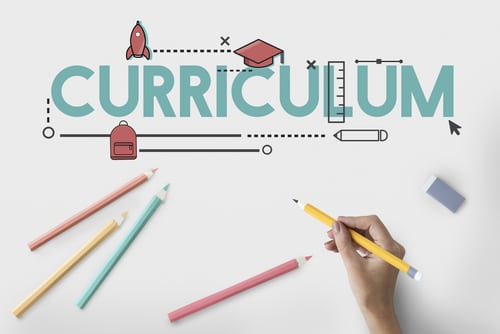Blog
Stay up-to-date on the latest Higher Education, K-12 and Curriculum Design content.
Higher Ed
The 4 Top Considerations When Launching Online College Programs
With the growth of online learning, many colleges are now taking steps to build online programs. Even before the pandemic, face-to-face attendance was decreasing. Meanwhile, the enrollment for online courses indicated a positive gain. Yet again, college enrollment has dropped. Some causes have been students dropping out because of mental stress. High tuition costs create another barrier for students not to enroll in a college program because they fear student loan debt. Higher-ed leaders can review these 4 critical considerations when creating online college programs.
College Courses: 5 Elements to Include for First Year Students
Students enter college from different backgrounds and situations. They might be fully college-ready; meanwhile, others need help. Besides that, college students might not know how to effectively study and attend classes. Thus, colleges have created first-year courses to help guide these students. The What Works Intervention Report produced by the Department of Education shows that students who attend first-year courses did better in college. With more online learning, first-year college courses become a valuable tool for retention and college-career guidance. They can be embedded in core courses like biology and offer various components such as socialization and learning support. Higher-ed leaders can include these five elements for these first-year college courses.
5 Powerful Methods for Higher-Ed Leaders to Address Mental Health for College Students
Sixty percent of prospective college students say mental health services are very important when deciding the school to attend. Before the pandemic, that same outlook was only shared half that amount by students. With this issue, increasing mental health disorders affect students’ academic achievement. Therefore, colleges and universities need to invest in, advocate for, and address the mental health needs of college students. Addressing mental health helps increase student outcomes, raise enrollment and retention rates, prevent suicide, and meet a school’s mission goals and economic needs. Higher-ed leaders consider the following five strategies to improve mental health for both students and institutions.
Credentialing: Why Higher-Ed Leaders Should Bridge Credit and Non-Credit Courses
College leaders adeptly balance the competing needs of their institution. For years, colleges have held a dual mission: Prep workers for employers and equip students to transfer to four-year institutions for degree obtainment. Nevertheless, these dual missions split into two distinct tracks creating bureaucratic barriers. These walls make moving between obtaining a career-centric certification and a traditional degree difficult for students. Sadly, students of color and at-risk have the most to lose. Still, higher-ed leaders can take steps to bridge the gap between non-credential and credit courses to improve credentialing.
K-12
Using Open-Ended Questions in Student-Centered Learning
Using open-ended questions can get a better, longer response than closed-ended questions in student centered learning classrooms.
Advantages and Disadvantages of Competency Based Education in K-12
Competency-based education has many plusses. Still, it is worth taking a moment to get to know what to expect from this plan. Yes, let’s talk about what competency-based education (CBE) is. Then, let’s dig into a few quick pros and cons. CBE focuses on the mastery of the subject and not how long it takes a learner to finish it. Competency-based education is popular in traditional hard skill careers, such as nursing and technical jobs.
Curriculum Development Using Effective Goals and Objectives
When developing quality curriculum, clearly articulated goals and objectives are the key to success. Understanding what students should learn each school year and course allows curriculum designers to plan effectively for day-to-day learning as well as for long-term...
Major Steps in the Curriculum Development Process
Quality curriculum development means combining educational standards, subject matter expertise, and instructional design into a cohesive flow that is appropriate for the target learner. There are four broad steps to the curriculum development process. These steps...
Curriculum Design
Using Open-Ended Questions in Student-Centered Learning
Using open-ended questions can get a better, longer response than closed-ended questions in student centered learning classrooms.
Curriculum Development Using Effective Goals and Objectives
When developing quality curriculum, clearly articulated goals and objectives are the key to success. Understanding what students should learn each school year and course allows curriculum designers to plan effectively for day-to-day learning as well as for long-term...
Major Steps in the Curriculum Development Process
Quality curriculum development means combining educational standards, subject matter expertise, and instructional design into a cohesive flow that is appropriate for the target learner. There are four broad steps to the curriculum development process. These steps...
5 Great Places to Find a Subject Matter Expert
Subject Matter Experts can be found in these 5 places.









